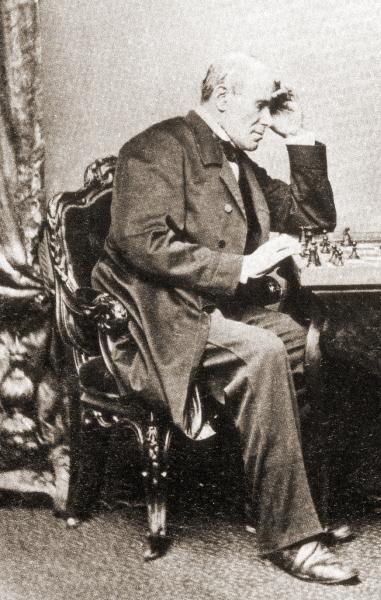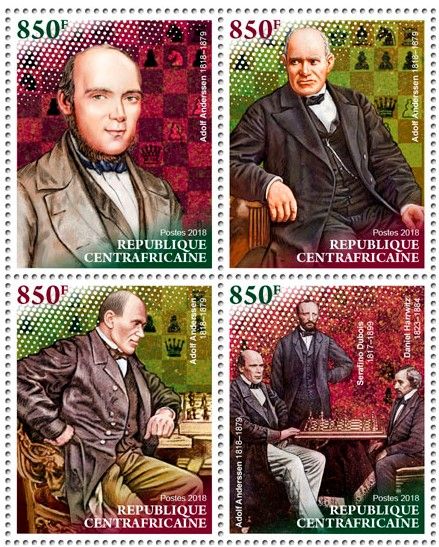
Commemorating The Immortal Game Of Adolf Anderssen
Played on this date in 1851 is a game famously known as The Immortal Game. Although now played 169 years ago, this game still inspires chess players everywhere.
- Who Played The Immortal Game?
- How Was The Immortal Game Won?
- Where Was The Immortal Game Played?
- How Has The Immortal Game Been Described?
Who Played The Immortal Game?
Adolf Anderssen (1818-1879) set a high bar for making amazing sacrifices, and his game in London against Lionel Kieseritzky on June 21, 1851 brilliantly illustrates how to give up a piece (or more) to gain a tactical or positional advantage.

How Was The Immortal Game Won?
Anderssen’s bold sacrifices—starting with a bishop (on move 11) and continuing next with both rooks (first with move 18) and then the queen (on move 22)—led to a positional advantage where he could checkmate Kieseritzky with the three remaining minor pieces. Consider that Kieseritzky lost just three pawns in these exchanges. Anderssen’s astounding performance clearly illustrates one of his favorite sayings: “Attack! Always attack!”
Attack! Always attack!
—Adolf Anderssen
Where Was The Immortal Game Played?
The game was played in London when Anderssen was there for the first international tournament that marked the first time that the best players in Europe had met in a single event. Its importance was described by GM Robert Byrne in 1997 this way: “[I]t was not until the International Tournament of 1851, held at the Crystal Palace of the London Exhibition, that tournament play entered the chess scene."

The Immortal Game, gaining its nickname in 1855 by Ernst Falkbeer (an Austrian chess master and journalist), was played at the venue but wasn’t part of the tournament. The tournament coincided with the London Exhibition, officially named the Great Exhibition of the Works of Industry of All Nations, which took place in the landmark Crystal Palace and was the first of the World’s Fair displays of culture and industry that were popular in the 19th century.

How Has The Immortal Game Been Described?
The game illustrates the romantic style of chess play in the 1800s when rapid development and attack were regarded as the best way to win. Kieseritzky was so impressed with Anderssen’s play that he telegraphed the moves to his chess club in Paris when the game was over, and they were published in July 1851 by La Regence, a French chess magazine.

In Lessons in Chess, Lessons in Life, Jose Fadul quotes GM Garry Kasparov as calling this game one of the “crown jewels” of the chess world because it is so spectacular. Savielly Tartakower (1887-1956) simply describes it as “a beautiful game.” In his book 500 Master Games of Chess co-authored with Julius du Mont (1881-1956), the checkmate is described this way: “A forced mate by three minor pieces against the full array of the black forces!”
A forced mate by three minor pieces against the full array of the black forces!
—Savielly Tartakower and Julius du Mont in 500 Master Games of Chess
Historical records, including an account in 1893 by Friedrich Amelung in the journal Baltische Schachblaetter, indicate that Kieseritzky resigned around the 20th move because Anderssen had told him the mating moves. As a result, the final moves probably were not actually played on the board in the original game.

Conclusion
Because Anderssen won the 16-player tournament, he was considered the best European player at that time, although several invitees to the event were not able to participate. For more about Anderssen and his penchant for making bold sacrifices, check out his Evergreen Game played in 1852 that is similar in fame to the Immortal Game.
Thanks for reading. What are your comments? Is The Immortal Game one of your favorites?
